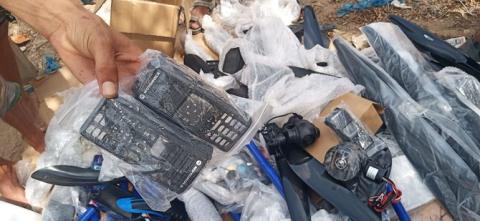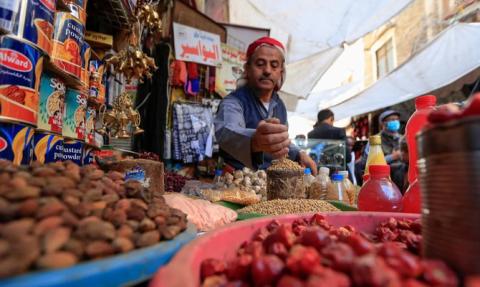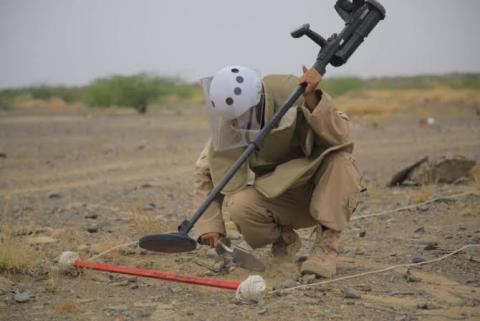Why Yemen is at war


Yemen’s STC has declared self-rule in the south, complicating U.N. efforts to end a ruinous conflict and protect the country’s shattered health sector from the spread of COVID-19.
The move by the Southern Transitional Council (STC) risks renewed fighting between nominal allies in a Saudi-led coalition that has been battling the Houthi group aligned to Iran for the past five years.
The United Nations is racing against time to bring about a permanent ceasefire, aware the new coronavirus crisis could add further misery to what is already the world’s worst humanitarian crisis.
But Yemen’s problems are so complex that even a decisive outcome in the conflict-within-a-conflict between the STC and the Saudi-backed government might not help end the wider war.
North and south Yemen united into a single state in 1990, but southern separatists tried to secede from the north in 1994. Their forces were beaten. More power and resources flowed to the northern capital, Sanaa.
Former president Ali Abdullah Saleh had ruled north Yemen since 1978 and the unified state after 1990. His relatives controlled core parts of the army and economy. Critics said corruption was rife.
In the far north, some of the Zaydi sect of Shi’ite Islam chafed as their heartland became impoverished. In the late 1990s, some Zaydis formed the Houthi group, which fought Yemen’s army and grew friendly with Iran.
The Muslim Brotherhood and other Sunni Islamists gained strength, particularly under General Ali Mohsen al-Ahmar, who built a power base in the army. Jihadist fugitives formed al Qaeda in the Arabian Peninsula (AQAP).
ARAB SPRING
When pro-democracy mass protests broke out in 2011, some of Saleh’s former allies turned on him. The army split. Separatists rallied in the south. The Houthis seized more areas.
Yemen’s Gulf neighbors persuaded Saleh to step down. Deputy president Abd-Rabbu Mansour Hadi was elected in 2012 to a two-year term to oversee a democratic transition.
A “National Dialogue” of Yemen’s opposing groups began hashing out a new constitution but things soon fell apart.
Hadi was widely considered weak and his administration corrupt. Saleh’s allies undermined the transition. AQAP set up a mini-state and hit Sanaa with ever bloodier bombings.
In late 2014, the Houthis seized Sanaa with help from pro-Saleh army units, forcing Hadi to share power. The Houthis and southern separatist rejected a proposed federal constitution.
The Houthis arrested Hadi in early 2015. He escaped and fled to Aden, pursued by the group. Saudi Arabia formed a Western-backed coalition of Sunni Muslim allies and intervened to prevent Iran from gaining influence on its border.
They took Hadi to Riyadh, notionally preserving his internationally recognized government. He became a nominal figurehead for southern separatists, northeastern tribes, Sunni Islamists and army remnants loyal to Ahmar.
DEADLOCK
The Houthis and Saleh’s forces were driven from Aden and its environs in south Yemen, and from central Marib in 2015. Years of military stalemate followed with the Houthis holding most of the easily defended highlands and the Red Sea port of Hodeidah.
The coalition kept up intense air strikes, aiming to split the Houthis and Saleh. They imposed a partial blockade to stop Iran arming the Houthis, something it denies doing. U.N.-backed talks went nowhere.
In 2017, Saleh abandoned his Houthi allies, hoping to cut a deal and regain power for his family. He was killed fleeing Sanaa and his loyalists turned on the Houthis.
Cracks in the alliance widened. Southern separatists supported by the UAE clashed with Saudi-backed fighters. The Saudis brought in Ahmar to command forces around Marib – a red flag for the UAE due to his link to the Muslim Brotherhood.
The death toll from air strikes and the near famine in Yemen prompted international outrage, making it harder for Western allies to continue military aid.
WESTERN PRESSURE
To break the Houthis, the coalition in 2018 tried to seize Hodeidah port, the group’s main supply line. It failed. Aid groups warned a full assault may disrupt food and aid flows.
As military options faded and Riyadh came under intense Western scrutiny over the murder of journalist Jamal Khashoggi, the coalition backed U.N.-sponsored talks in December 2018.
The warring sides agreed a troop redeployment deal for Hodeidah that failed to materialize, though a truce there held.
Meanwhile regional tensions with Iran escalated after attacks in 2019 on energy assets in the Gulf. The UAE reduced its presence in Yemen, saddling Riyadh with the war. Abu Dhabi maintained influence via southern fighters.
After an attack on Saudi oil plants claimed by the Houthis but which Riyadh blamed on Tehran, Saudi Arabia launched back-channel talks with the group. Little progress was made.

Yemeni officials on Monday condemned arrests and prosecutions by the Iran-backed Houthi militia directed against media, journalists and celebrities…

Yemen's warring parties are gearing up for new waves of conflict in 2023 amid a lack of decisive steps towards sustainable peace, adding to the suf…

The UAE will help to recruit doctors and deliver crucial supplies for hospitals in Yemen under a major healthcare drive. The Khalifa bin…